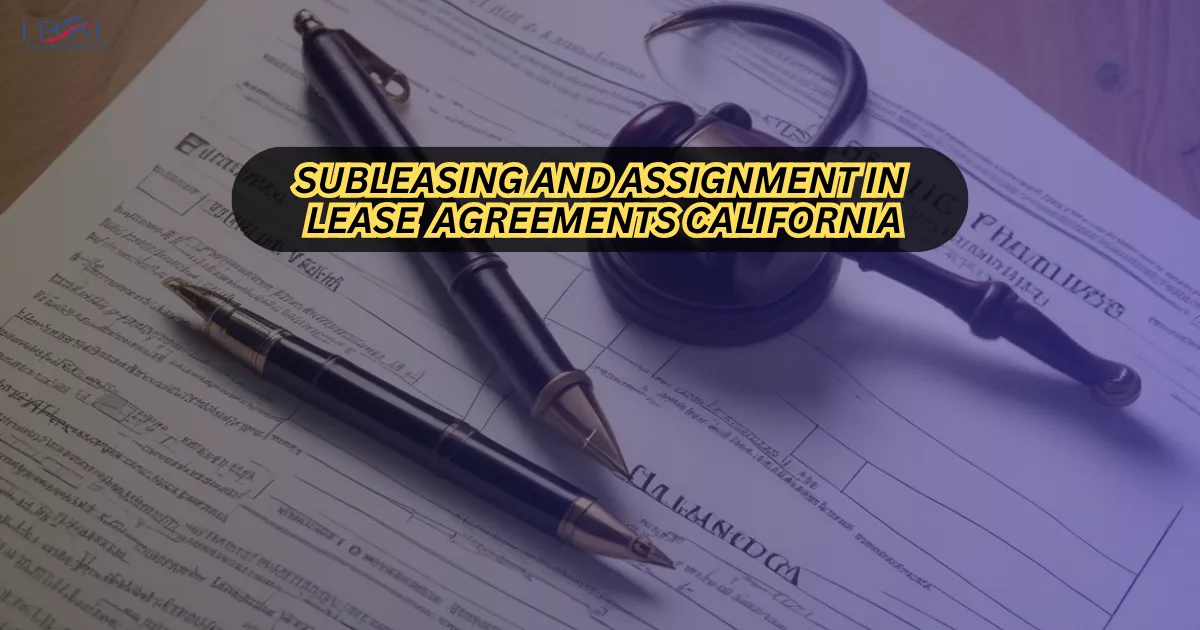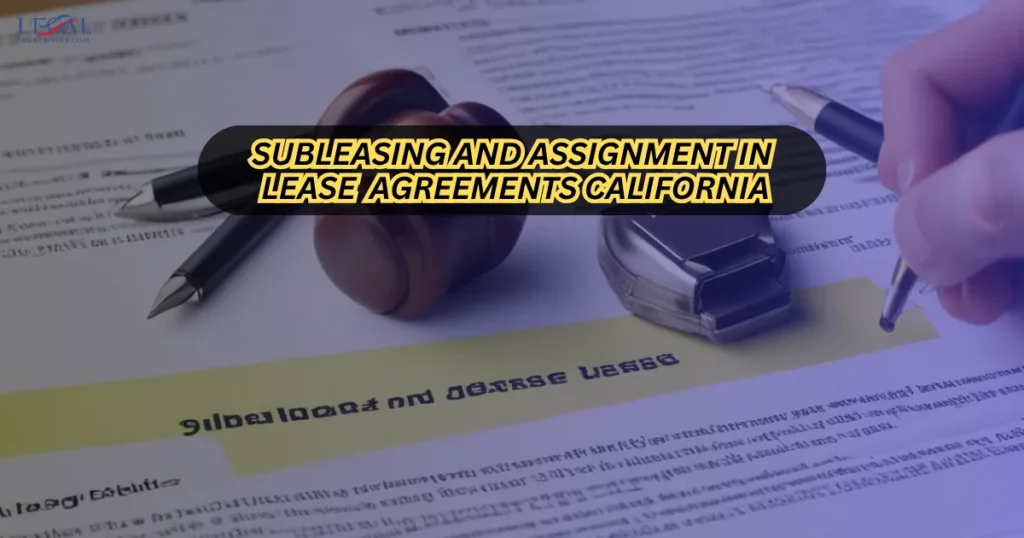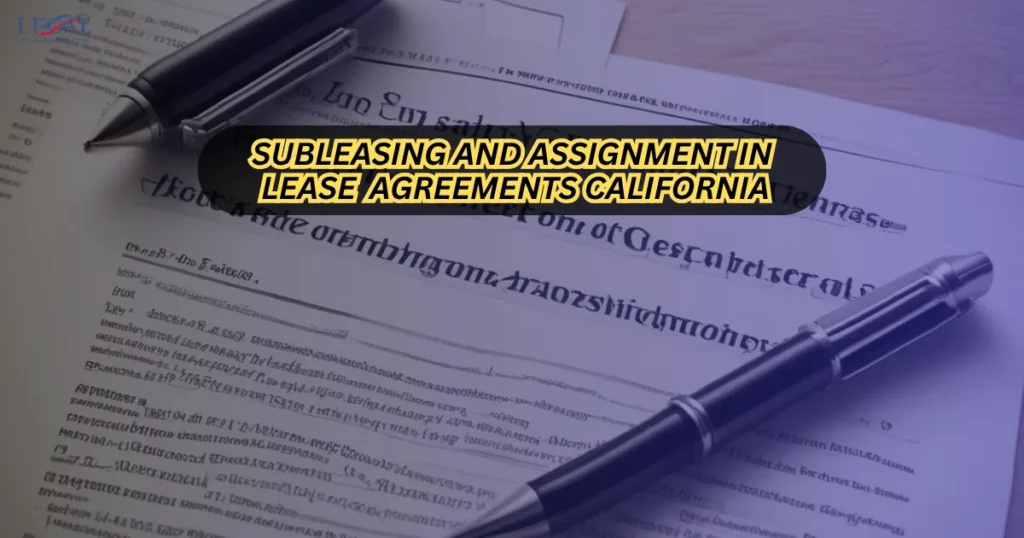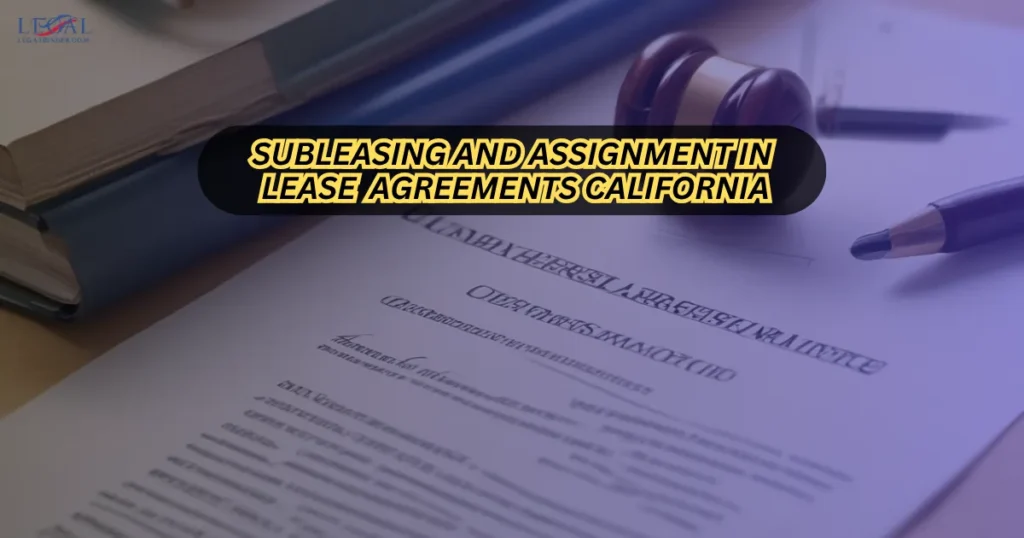Physical Address
304 North Cardinal St.
Dorchester Center, MA 02124
Physical Address
304 North Cardinal St.
Dorchester Center, MA 02124

Subleasing and assignment in lease agreements California might seem like legal jargon until you or someone you know faces a sudden need to move before the lease ends. Maybe you landed your dream job across the state, or your roommate moved out unexpectedly. Instead of breaking your lease — and risking costly penalties — you may consider subleasing or assigning your lease to another person. Both options can offer flexibility, but in California, the rules can be strict, complex, and full of legal traps for the unwary.

Imagine this: You find a trustworthy friend to take over your room while you’re away for a six-month overseas contract. You think it’s a win-win — they get a place to stay, and you keep your lease obligations on track. But weeks later, your landlord says you violated your lease because you didn’t get formal approval. You’re now facing eviction notices and legal fees. This scenario is far more common than you might think, and it’s exactly why knowing — and following — the subleasing and assignment laws in California is critical.
This guide will help you understand the difference between subleasing and assigning, the legal requirements in California, and how to protect yourself legally and financially during the process.
Need more California housing and lease agreement insights? Visit our homepage for comprehensive legal guidance and resources.
Subleasing happens when you rent all or part of your leased property to another tenant, known as a subtenant. You remain responsible to the landlord for the lease, even if the subtenant pays rent directly to you.
An assignment transfers all of your lease rights and obligations to a new tenant — called the assignee — who takes over your role entirely.
Authoritative sources you should be aware of:
Most lease agreements in California specifically address subleasing and assignments. Many require written landlord consent before proceeding.
Lease terms can grant landlords the right to approve or reject proposed subtenants/assignees, often with a “reasonable” clause.
California law leans toward requiring landlords to act reasonably — e.g., rejecting due to poor credit history or over-occupancy, not personal bias.
Always obtain landlord approval in writing. Verbal agreements are risky and difficult to enforce.
Even when subleasing, you remain legally responsible for rent payments and property damages.
With a full lease assignment and landlord approval, the assignee assumes all responsibilities.
While there is no single statute banning subleases, breaches of contract law apply under California Civil Code §§821–830 and landlord-tenant sections.
Cities like San Francisco or Los Angeles may have extra rules protecting tenants seeking to sublease.
Assignments may involve transferring your deposit to the assignee, or requiring the landlord to settle with you separately.
Subleasing under rent control may have special rules, such as not charging a subtenant more than the proportional rent amount.
You may remain liable for damages caused by a subtenant if they are not listed on a separate rental agreement.

Include subtenant’s full name, contact information, rental history, and proposed start/end dates.
Offer proof of the subtenant’s income and creditworthiness to reassure the landlord.

Is subleasing legal in California?Yes, unless your lease forbids it or requires landlord consent — which is very common.Can my landlord refuse my sublease request?They can if the refusal is based on reasonable grounds stated in the lease or supported by law.What’s the biggest difference between subleasing and assignment?Subleasing keeps you responsible for the lease; assignment fully transfers your rights and duties.How do I protect myself when subleasing?Get landlord consent, use a detailed written sublease, and vet the subtenant carefully.
Subleasing and assignment in lease agreements California give you options when life takes unexpected turns. By understanding the differences, following legal requirements, and communicating clearly with your landlord, you can make the process smooth and legally safe. Whether you’re a tenant seeking flexibility or a landlord ensuring property protection, knowledge is the key to avoiding costly disputes.
Take action: Review your lease today and prepare a written request before offering your space to someone else. Doing so helps protect your finances, your reputation, and your rental record.
For more comprehensive housing law resources in California, visit our home page.